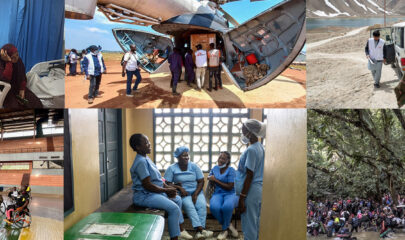Patients with neglected tropical diseases (NTDs) need better access to safe and effective diagnosis and treatment, says Doctors Without Borders/Médecins Sans Frontières (MSF) in a new report calling for an improved global response to NTDs in order to prevent further deaths and disability.
These diseases are considered ‘neglected’, as – although they are usually life-threatening and claim thousands of lives every year – pharmaceutical and diagnostic industries ignore the development of vaccines, diagnostic tools and drugs to tackle them.
“NTDs almost exclusively affect people living in extreme poverty. As a result, there are no vaccines, diagnostic tools are limited, and treatments are far from optimal and often unavailable or unaffordable,” says Dr. Christos Christou, MSF’s international president.
Despite much progress, some of the most life-threatening diseases remain far from elimination, or even control, and continue to claim hundreds of thousands of lives every year. A new road map for these diseases by the World Health Organization presents an opportunity to support the development of treatments, vaccines and diagnostic tools. Its ambitious targets for 2030 include 100 countries eliminating at least one NTD, and reducing by 90 per cent the number of people requiring medical interventions for NTDs.
But the road map comes at a time when the COVID-19 pandemic threatens progress towards the control and elimination of NTDs. Neglected tropical disease programs have been disrupted, fragile health systems face more strain, and there are alarming indications that resources for NTDs will be diverted and funding reduced. There is a real risk they could slide into further neglect, resulting in significant achievements being reversed and even more lives lost to NTDs.
“Despite the challenges, we can overcome the neglect,” says Christou. “With commitments, funds and better tools to find, diagnose and treat patients, we can make NTDs diseases of the past.”
FINDING WAYS TO MANAGE AND CONTROL NEGLECTED TROPICAL DISEASES
MSF’s report, Overcoming neglect, details the organization’s involvement with neglected tropical diseases over the last three decades. MSF’s work includes treating patients, carrying out research, supporting efforts to identify new treatments and diagnostics, and playing an active role in reducing the incidence of NTDs. We call for an improved global response to NTDs.
MSF has been providing direct care to patients with NTDs for more than 30 years, with a focus on the most deadly and overlooked diseases in this group. In that time, hundreds of thousands of patients have been treated who otherwise may not have survived. Many had life-threatening parasitic infections such as kala azar (visceral leishmaniasis), Chagas disease (American trypanosomiasis) or sleeping sickness (human African trypanosomiasis). Some were affected by noma, a deadly bacterial disease so neglected it is not yet recognized as an NTD. Others were the survivors of snakebite envenoming, the medical condition resulting from a snakebite, which causes more death and disability than any other NTD.
NOMA

Noma is a gangrenous infection which starts in the mouth and eats away at facial tissue, causing life-threatening disfigurement and severe social stigma. Without treatment, noma is fatal in 90 per cent of cases. If affects mostly children under the age of 10 – especially those between two and five – across Africa and Asia. Derived from the Greek word, nomē, meaning ‘to devour,’ noma’s progression is fast, causing the rapid destruction of the cheek, and potentially the jaw, lip, nose and/or the eye, within weeks.
This deadly bacterial disease is so neglected it is not yet listed as a neglected tropical disease.
Noma is preventable, but only if there is knowledge about the disease and how to treat it. Good nutrition, oral hygiene and access to healthcare and vaccinations against childhood diseases all help to prevent noma.
Noma is treatable if detected and managed during the first weeks of the disease. With basic oral hygiene, antibiotics and wound dressing a patient can recover from noma within a few weeks. This is helped by managing underlying risk factors, such as malnutrition and other diseases like measles.


